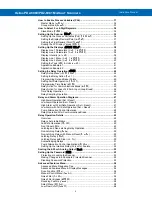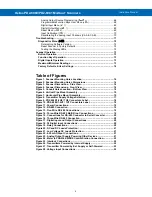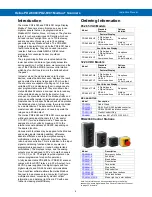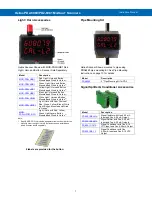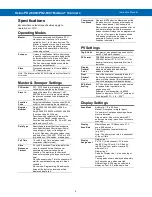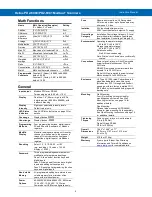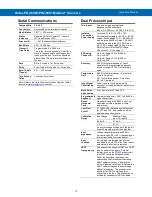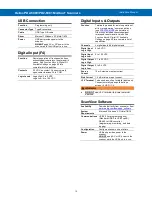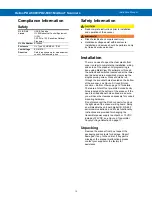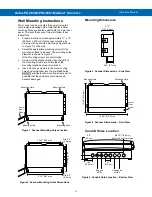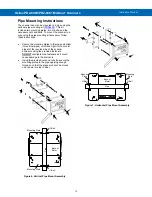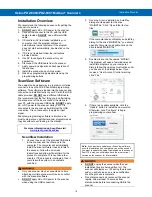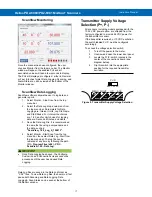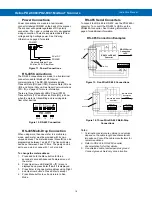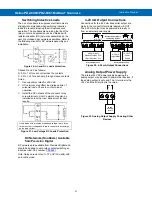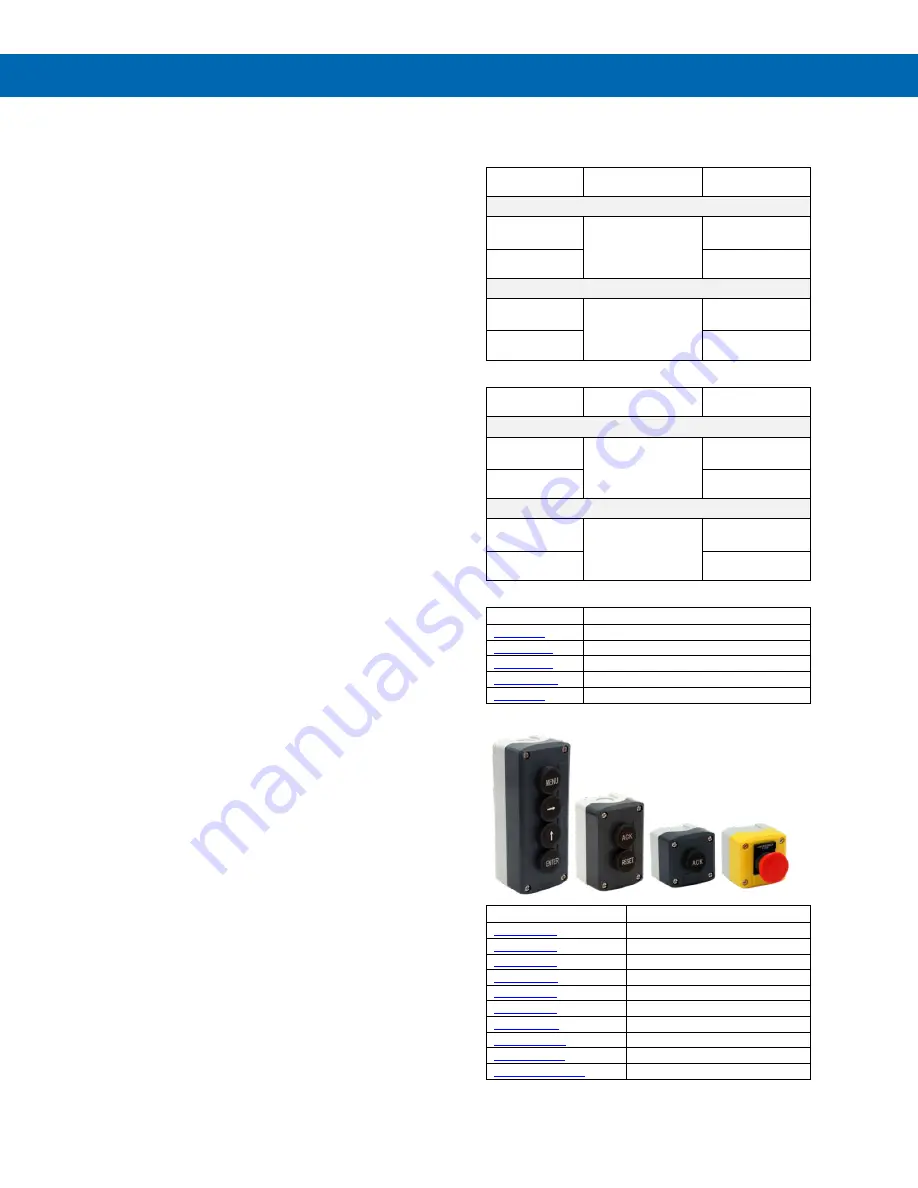
Helios PD2-6080/PD2-6081 Modbus
®
Scanners
Instruction Manual
6
Introduction
The Helios PD2-6080 and PD2-6081 Large Display
Modbus
®
Scanners are multi-purpose, easy to use,
digital scanners that can be programmed as a
Modbus RTU Master, Slave, or Snooper. They feature
large 1.8 inch superluminous LED digits, which can
be read in direct sunlight from up to 100 feet away,
and are capable of scanning up to 16 variables
generated by any Modbus device. The PD2-6080
displays in decimal format, while the PD2-6081 has a
feet & inches display. They are housed in a water-
resistant, field mountable NEMA 4X/IP65 rated
enclosure for convenient indoor or outdoor
installation.
The programming buttons are located behind the
lower panel door and are not generally accessible
during operation. For that reason, we recommend the
use of the PDA2364-MRUE remote control station
which has four buttons to mimic the buttons behind
the panel.
In master mode, the Helios reads up to 16 slave
devices, scales the data from each, displays the result,
and operates the internal relays and 4-20 mA output.
The scanners are capable of polling up to 16 process
variables (PVs) and displaying them in sequence at a
user programmable scan rate. They also allow other
Helios Modbus Scanners in snooper mode to read any
of the variables being polled by the master. As a
snooper, the scanners listen to the Modbus traffic and
pick up a specific register or registers being polled by a
master device from a specific slave device and process
the data being read. In slave mode, they are controlled
by a master device. The data sent to them by the
master is scaled, displayed, and used to operate the
relays and 4-20 mA output.
The Helios PD2-6080 and PD2-6081 come equipped
with dual analog input channels (4-20 mA and/or
0-10 VDC) for use in Master mode. These can be
assigned to mA or volts by mapping a PV to the
internal scanner addresses 256-259, depending on
the desired function.
Various math functions may be applied to the Modbus
and analog inputs including addition, difference,
absolute difference, average, weighted average,
multiplication, division, minimum, maximum, draw,
ratio, and concentration. This is in addition to the input
signal conditioning functions (linear, square root,
programmable exponent, or round horizontal tank
calculations). The displays, relays, and the analog
outputs may be assigned to PVs or to math channels
C1, C2, C3, or C4. The digital inputs/outputs can be
custom-programmed for specific operations.
A fully loaded Helios PD2-6080 or PD2-6081 scanner
comes with four SPDT relays, a 4-20 mA output, two
24 VDC power supplies, five digital inputs and four
digital outputs, and RS-485 serial communications.
Free ScanView software allows the Helios Modbus
Scanner to be accessed via a computer. Configure
multiple scanners, conveniently monitor critical
information, and data log right from a PC with ease,
further increasing plant efficiency.
Ordering Information
85-265 VAC Models
Model
Standard
Features
Options
Installed
Decimal Display
PD2-6080-6H0
5 Digital Inputs,
4 Digital Outputs,
RS-485
Communications
No options
PD2-6080-6H7
4 relays
4-20 mA output
Feet & Inches Display
PD2-6081-6H0
5 Digital Inputs,
4 Digital Outputs,
RS-485
Communications
No options
PD2-6081-6H7
4 relays
4-20 mA output
12-24 VDC Models
Model
Standard
Features
Options
Installed
Decimal Display
PD2-6080-7H0
5 Digital Inputs,
4 Digital Outputs,
RS-485
Communications
No options
PD2-6080-7H7
4 relays
4-20 mA output
Feet & Inches Display
PD2-6081-7H0
5 Digital Inputs,
4 Digital Outputs,
RS-485
Communications
No options
PD2-6081-7H7
4 relays
4-20 mA output
Accessories
Model
Description
Cable Gland
RS-232 to RS-485 isolated converter
USB to RS-485 isolated converter
Plastic Conduit Plug
Snubber: 0.01 μF/470 Ω, 250 VAC
PDA2360 Control Stations
Model
Description
Emergency button
Ack button
Blank button
Reset button
Tare button
Stop button
Silence button
Ack and Reset buttons
Two blank buttons
Menu, right, up, enter buttons
Note: Control stations can be connected directly to the Helios
scanner
’s on-board digital inputs. See
on page
for details.




